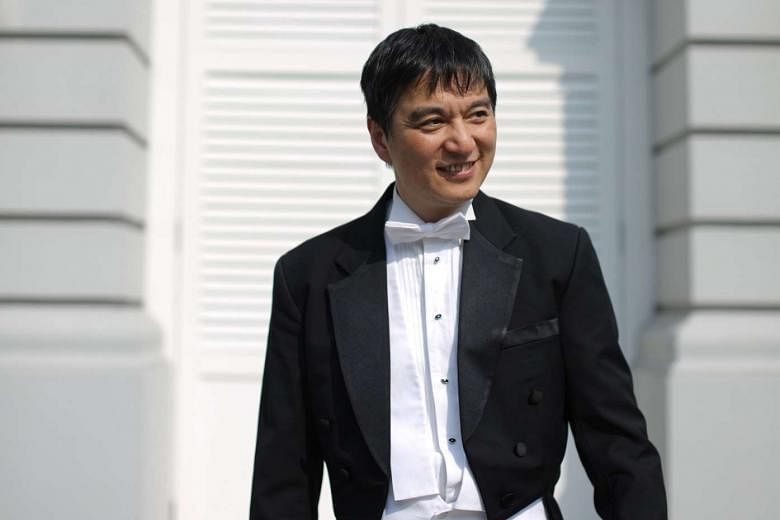REVIEW / CONCERT
BERTRAND CHAMAYOU PLAYS LISZT
Singapore Symphony Orchestra
Victoria Concert Hall/Last Friday
Not for the first time, there was a synergy in the programming of Singapore Symphony Orchestra concerts that worked well.
That was not apparent at first when music director Shui Lan raised his baton for Beethoven's rarely heard Leonore Overture No. 1.
This is one of four overtures crafted for Beethoven's only opera Fidelio, which was originally known as Leonore, named after its heroine. It was never heard in Beethoven's lifetime.
The emphatic opening note in G is common to all three Leonore overtures, but this short-winded incarnation took on an unfamiliar path until themes to be found in Overtures Nos. 2 and 3 appeared.
It was fascinating to note how Beethoven modified and transformed his music over time until a definitive form was reached, aided by this cogent and coherently helmed reading.
Thematic metamorphosis was central to Franz Liszt's Second Piano Concerto, which opened quietly with its main theme presented as a woodwind chorale.
Even French pianist Bertrand Chamayou's solo entry was sedate, but soon a web of fine filigree was spun, evolving into the outright virtuosity associated with Liszt's pianism.
Chamayou's scintillating fingers, immaculate octave and chord playing were not merely brilliant ends in themselves, but rather the means by which Liszt expressed his symphonic thought.
His projection was pin-point and incisive, like a laser beam scything through metal plates.
Pianist and orchestra were as one throughout, not least in the sublime segment where Chamayou played accompanist to Ng Pei-Sian's cello solo.
Not even the vulgarity of sweeping octaves on both hands could diminish the stature of this performance.
Liszt knew how to grandstand and bring down the house and Chamayou duly obliged.
His encore was most appropriate: Liszt's transcription of Mendelssohn's lied On Wings Of Song, a keen demonstration of cantabile skills.
Continuing in the Romantic thread, the second half was devoted to Robert Schumann's Second Symphony.
The slow introduction to the first movement sounded hesitant and prosaic, as if the gears had not shifted into place.
However, once the faster section was reached, the ensemble bonded as one, buoyed by a Beethovenian vigour.
This was the most Beethoven-like of Schumann's four symphonies, and it got the passion and energy it deserved in this performance.
And even before the rapid manoeuvres of the opening movement had settled, the second movement's perpetual motion got underway with the violins in imperious form.
Clean-cut and clear as crystal, this was another virtuoso reading, contrasted by the long-breathed ruminations of the slow movement.
Here was the heart of the symphony, one which ached and yearned with nostalgia, an area which conductor Shui was adept at coaxing from his orchestra.
The valedictory finale saw the heroic first movement motif melding as one with a quote from Beethoven's song cycle, An Die Ferne Geliebte (To The Distant Beloved).
The love of a man and a woman from Leonore had come full circle and found fruition in Schumann.

